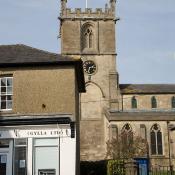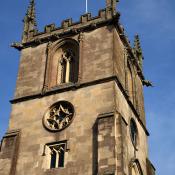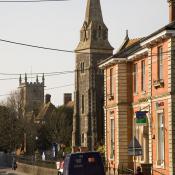Gillingham High Street">Gillingham, the Leddenton of Thomas Hardy's novels, is situated in the Blackmore Vale, and is the most northerly town in Dorset. The town is in a convenient position for anyone wishing to explore the surrounding area, as it is on the main railway line from Exeter to London, and only four miles from the main London to Penzance trunk road.
A Stone Age barrow in the town indicates that there has been a settlement here for thousands of years, and there is also evidence of Roman settlement in the 2nd and 3rd centuries. The name of the town was first mentioned in the 10th century Saxon charter. In the Domesday Book it is recorded as 'Gelingham' but later spellings include 'Gellingeham', 'Gyllingeham' and 'Gilingeham'. The name is believed to mean 'the home of Gylla'.
Gillingham Church of St Mary">
There is evidence of royal connections in Saxon times and, in the Middle Ages, Gillingham was the seat of a royal hunting lodge. This was visited by King John and the first three Henrys. The lodge was demolished in 1369 after it had fallen into disrepair.
Gillingham became a thriving centre for the local farming community and built the first Grammar School in Dorset in 1526. By the end of the 18th century, it also had a silk mill. The local church has a 14th century chancel, but mostly dates from the 19th and 20th centuries. There are still many 15th century buildings surviving in the town.
Thatched cottage in Gillingham">
The arrival of the railway, in the middle of the 19th century, brought additional prosperity to the town and new industries grew up, including brick making, printing, soap manufacture and cheese production. Further expansion took place during the Second World War when there was large scale evacuation from London to rural towns.
Much of Gillingham is still much as it was in the days of Hardy. John Constable knew the area too, and his painting of the old town bridge is in the Tate Gallery in London.




